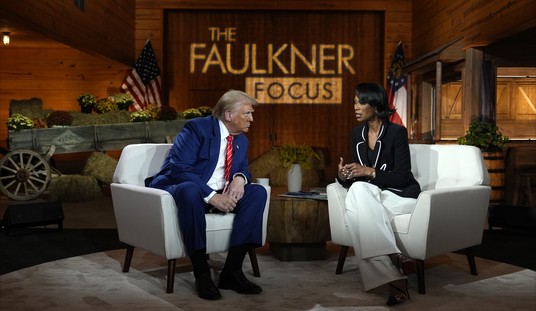
To listen to Democrats and other assorted leftists, you’d have thought Senate Republicans passed the, “We Are Going To Kill You Act of 2017.”
The Senate passed a pretty generic tax package that does include the elimination of some deductions and credits that have long been there. But outside of that, it’s a standard Republican tax plan. Left-wing bellyaching notwithstanding, the plan overall, is something Congress should get done and on President Trump’s desk to sign.
The tax bill is not perfect, and the differences between the House version and the Senate version will require some intense negotiation (The Tax Foundation published a useful table showing the two plans, side by side). The House could take up the Senate bill, pass it and have it on the President’s desk in a few days but it will likely go to a conference committee where the changes will get hammered out.
The most significant item in both plans is the corporate rate reduction. The United States corporate tax rate of 35 percent is one of the highest in the world. Corporate inversion (where corporations place their “headquarters” as well as capital investments overseas to avoid higher taxes) was never higher than it was during the Obama administration. Both plans cut the corporate rate from 35 percent to 20 percent. The House version kicks in immediately while the Senate version doesn’t take effect until 2019.
Economist Laurence Kotlikoff, who uses modeling that shows the corporate tax reduction will have a net positive effect on wages. People should ignore the scare stories they’re hearing the media and liberals about corporations using all of the money for dividends and stock buy-backs. While that may be true in part (and why not?) businesses will still have an incentive to make capital investments here in the United States. Kotlikoff explains:
The new plan’s business-tax provisions will reduce the effective marginal tax rate on U.S. investments dramatically, from close to 35% to under 19%. Depending on the year in question, my global dynamic macroeconomic model predicts a 12% to 20% expansion in the U.S. capital stock, producing an average $3,500 real wage increase for each American working household. Moreover, economic growth spurred by the business-tax cuts will raise tax receipts enough to make the plan revenue-neutral.
Myopic conventional fairness measures consider only the current year’s net taxes—that is, taxes paid minus benefits received. They ignore net future taxes, making it impossible to account for phased-in reforms as well as consumption and estate taxes. Moreover, these methods understate the tax burden on the rich who save more relative to the nonrich and thus face higher relative taxes in the future based on their resulting taxable asset income.
Kotlikoff bases his analysis on the House plan so it may differ with the Senate version but not by much.
So what about revenues? The “adds to the deficit” line is one of the more infuriating aspects of dealing with any tax plan. The Congressional Budget Office and Joint Committee on Taxation are treated like Nostradamus in that any conclusion they come to demands acceptance no matter what.
The CBO and JCT have been wrong before because they use very conservative projections when estimating the revenues resulting from any tax plan. Sure enough, the JCT’s analysis that the GOP tax plan would “add” $1.4 trillion to the deficit rests on the notion the plan will only generate 0.8 percent GDP growth. That’s a myopic take, and they’ve been wrong before. Everybody argued the Bush tax cuts would “blow a hole in the deficit” when it did no such thing. In fact, the GWB tax cuts helped to increase revenue not just in nominal dollars, but as a percentage of GDP. Look at the chart below: (click for full size)
Note the spike after GWB’s tax cuts kicked in after 2003. Granted, that was wiped out due to the financial collapse (which had zero to do with the tax cuts), but the percentage continued to rise with the same level of taxation after the country recovered.
The final argument detractors of the Senate plan make deals with the Senate repeal of the individual mandate. They argue insurance premiums will rise as a result, but there is zero evidence to suggest that will happen. Why? Because nobody can show a causal effect that people purchase health insurance because of the mandate.
The individual mandate is a tax, nothing more. Studies have shown the two most prominent drivers of people obtaining health insurance come from the result of Medicaid expansion and subsidies, not the mandate. Chris Pope from The Manhattan Institute writes:
The individual mandate was intended to prevent the bulk of individuals from fleeing this unappealing arrangement. Its advocates have argued that the mandate reduces premiums on the exchanges, but this is only true to the extent that it pushes more cost-effective alternatives out of reach.
As a newly released Manhattan Institute Issue Brief demonstrates, the mandate is superfluous to the ACA’s core guarantee of affordable coverage for individuals with pre-existing conditions. In fact, it is subject to so many exemptions that recent studies have failed to discern any impact of the mandate on the proportion of Americans who are uninsured.
6.5 million people paid the penalty in 2016. The bulk of the people paying the tax? The middle class. 80 percent of households that paid the penalty made less than $50,000.
Since Supreme Court Justice John Roberts declared the mandate penalty a tax, for purposes of keeping the Affordable Care Act alive and well, it belongs in any conversation about tax reform. Congress should do more to shore up the subsidies but freeing up $338 billion makes it worthwhile to yank the individual mandate.
Congress should pass the tax plan and get it on President Trump’s desk. It is worth the effort.














Join the conversation as a VIP Member